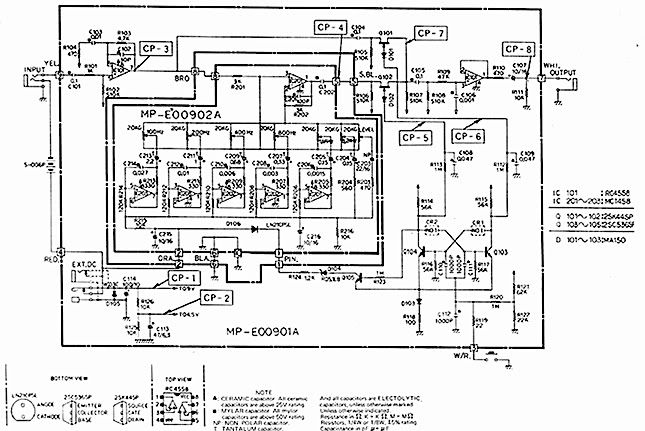This chord will have fundamental and overtone frequencies of all the notes in the chord and some will be of more strength than others.
Check this out for an explanation
http://www.bsharp.org/physics/guitar" onclick="window.open(this.href);return false;
so working out what frequencies are actually boosted by something like a EQ or amp or whatever and what are just occurring strength variations in the fundamental and overtones of all the notes due to other things, is hard to do unless it's something pretty obvious.
I'm using the term EQ below to describe how anything can alter and shape the frequency harmonic content of a tone.
The way the note is struck, the guitar body and neck EQ the pickup EQ the effects EQ''s the amp EQ the speakers EQ the mics EQ the post processing EQ etc etc can all alter how the actual frequency harmonic content of a tone ends up and trying to source what did what to the frequency harmonic content of a tone is a maze.
Spectrum Analysis has limitations.
Someone can play a D chord and then do a frequency analysis on it and then introduce something like the MXR EQ and then play the D chord again trying to play it in the same way as before and then see the frequency analysis change but getting audio from something like Ed's RWTD and then trying to work out what Ed's pickup did and what the amp did and what the post EQ did etc to the frequency content in the frequency analysis, well.
Another thing to do is to play a note and do a frequency analysis of it and then play the same note wiyth a different right hand attack, ie harder, more pinched, different pick angle etc and then do a frequency analysis of it and see what changed from the first note.
We all know about Ed's right hand, and Ed's right hand (and his left as well) is responsible for how some of the harmonic content ends up at any given time and no one has really got the exact right hand attack etc of someone else so that's a tone changer right there before we get to any gear.
Some general things can be picked up after the fact by frequency analysis, like how much of the frequency content is in the mids etc and the sign of the speakers frequency rolloff, just general things really.
btw check out the MXR 6 band EQ and the Maxon/Ibanez GE601 EQ, very similar circuits


